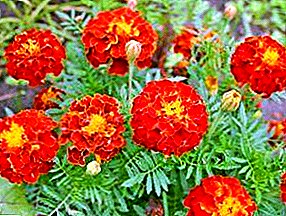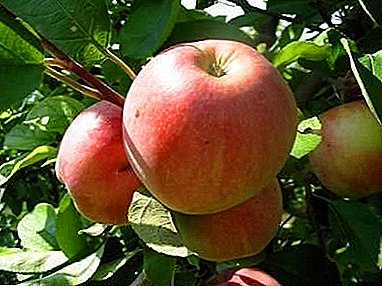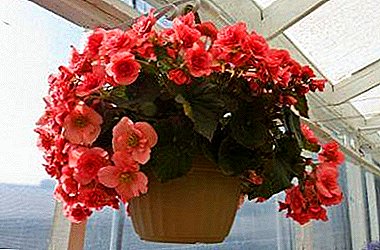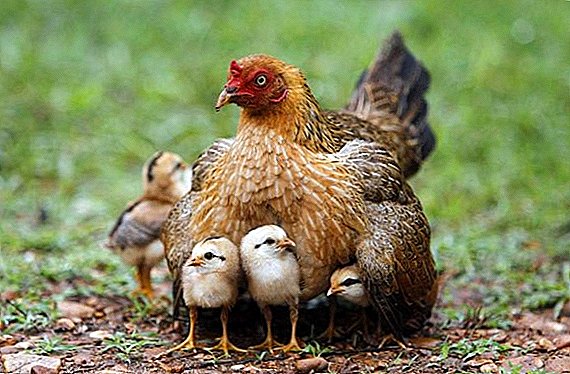
Marigolds belong to the plants of the Aster or Compound family. There are both annuals and perennial.
Being natives of America, these thermophilic plants grow in the wild and densely cover the territory from Argentina to Arizona.
Usually grows in the form of a compact bush with spreading branches with a height of 20 to 120 cm.
In nature, there are about 60 species of marigolds, but for ornamental floriculture use only some varieties. A distinctive feature for breeding is the structure of the inflorescences.
These are mainly clove-colored and chrysanthemum varieties with double, semi-double and simple leaves.
The use of marigolds
 The plant is very widely used in cooking in many countries of the world in the form of seasoning, known under the Russian name "Imeretinsky saffron".
The plant is very widely used in cooking in many countries of the world in the form of seasoning, known under the Russian name "Imeretinsky saffron".
Due to phytoncides, which are mainly found in the leaves, it is used in traditional medicine. Marigold tinctures are used to prevent diseases of the pancreas, as well as an anthelmintic, diuretic, and diaphoretic remedies, and marigold essential oil is valued in the perfume and alcoholic beverage industry.
Note to the gardener - Nasturtium, planting and care.
All about properly caring for dahlias here.
Read useful information about hydrangea garden //rusfermer.net/sad/tsvetochnyj-sad/vyrashhivanie-tsvetov/vyrashhivanie-gortenzii-na-priusadebnom-uchastke.html.
Marigolds - growing
All flower growers know that marigold is a very unpretentious plant. For cultivation, they do not require special care. However, if you want to admire the plentiful flowering a little longer, you will need to create some conditions.
If the soil in which you have sown marigold seeds is infertile, then for better growth you will need to use fertilizer 2-3 times during the flowering period.
 Marigold is grown by sowing seeds and seedlings grown in a greenhouse or at home. It is best to plant flowers in late spring, when there will be no night frost.
Marigold is grown by sowing seeds and seedlings grown in a greenhouse or at home. It is best to plant flowers in late spring, when there will be no night frost.
To do this, in the open, loose soil, you need to make deep holes, keeping a distance of 1.5-2 cm between them. Then sow the seeds, lightly sprinkle with earth and pour gently. Usually, when the air temperature is 15-25 ° C, the first shoots appear on the 4-5 day after planting.
Also, the period of seedling emergence depends on the time of seed collection. These flowers are bearing fruit from the end of July to the first decade of August. If the harvest was done in the middle of the fruiting period, respectively, these seeds will sprout a little later than the more mature ones.
 Since it is a heat-loving plant, it is better to plant seeds in well-lit areas, although they can grow in shady areas. They need moderate watering as the soil dries.
Since it is a heat-loving plant, it is better to plant seeds in well-lit areas, although they can grow in shady areas. They need moderate watering as the soil dries.
If you want to grow marigolds as an indoor plant, then use a clay substrate. Be sure to use good drainage (about 3 cm) for root ventilation.
When spraying, avoid contact with water on the inflorescences, as they may start to rot. Beware of high soil moisture, as this may cause the root system to rot, and the plant may be at risk of disease.
We recommend to read the article: Lilies, care and cultivation.
Read about care for tulips after flowering //rusfermer.net/sad/tsvetochnyj-sad/vyrashhivanie-tsvetov/tyulpany-voshititelnye-krasochnye-gosti-v-sadu.html.
Diseases and pests marigolds
Thanks to phytoncides that emit a peculiar smell, marigolds protect themselves, as well as nearby plants, from many pests. For this they love gardeners and try to plant these flowers around the perimeter of the site. However, with the wrong care, and they may get in trouble.
In case of insufficient watering and drought, the spider mite starts, and at high humidity a fungus and rot appear.
The most common disease of marigolds is “black leg”, which comes from dampness. During the disease, the plant stems begin to darken, bend and eventually die. To prevent this disease, it is necessary to periodically loosen the soil and immediately get rid of diseased plants, tearing them along with the root system, in order to avoid contamination of other flowers.
 Also pests of marigolds are spider mites, aphids, slugs, greenhouse whitefly. You can save yourself from spider mites by slightly increasing the humidity by spraying the bushes with plain water or extract of tobacco, several times a day.
Also pests of marigolds are spider mites, aphids, slugs, greenhouse whitefly. You can save yourself from spider mites by slightly increasing the humidity by spraying the bushes with plain water or extract of tobacco, several times a day.
Slugs and snails are another wicked enemies of the marigolds that harm by eating the leaves and stems of flowers. To prevent this, you can spray the flowers with a mixture of water with mustard and pour around the bushes the composition of ash and lime. If slugs are dangerous only at night, then the greenhouse whitefly is at any time of the day.
This tiny white butterfly feeds on sap from marigold leaves, and also lays larvae that can infect a plant with sooty fungi. Getting rid of this parasite is not so easy, so in some cases you have to use pesticides.
Fortunately, adult plants are very rarely sick, because three months after planting, the marigolds begin to actively release a protective substance that disinfects the soil.
Learn all about the peculiarities of many years of mallow.
Read about planting astilb in open ground //rusfermer.net/sad/tsvetochnyj-sad/vyrashhivanie-tsvetov/astilba-boginya-tenistogo-sada-sekrety-vyrashhivaniya.html.


 Note to the gardener - Nasturtium, planting and care.
Note to the gardener - Nasturtium, planting and care. We recommend to read the article: Lilies, care and cultivation.
We recommend to read the article: Lilies, care and cultivation. Learn all about the peculiarities of many years of mallow.
Learn all about the peculiarities of many years of mallow.









